Enchanting Vertical Blooms: A Guide to Growing Climbing Roses in the UK
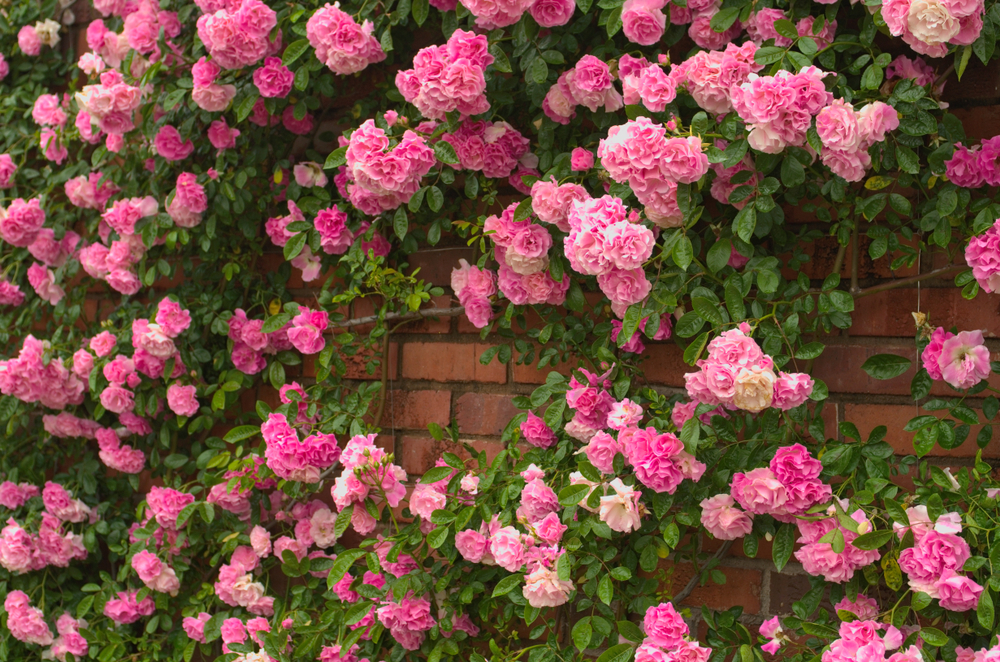 Climbing roses paint an alluring vision of romance in the classic English garden. Their cascades of vibrant hues and seductive scents are shorthand for elegance, transforming any ordinary corner into a storybook scene. This blog post is a tribute to these horticultural wonders – and a guide to nurturing them in the cool climes of the UK.
Climbing roses paint an alluring vision of romance in the classic English garden. Their cascades of vibrant hues and seductive scents are shorthand for elegance, transforming any ordinary corner into a storybook scene. This blog post is a tribute to these horticultural wonders – and a guide to nurturing them in the cool climes of the UK.
The Hardy Climbers of the Rose Family
Climbing roses are cherished by British garden enthusiasts for their statuesque growth and propensity for floral artistry. Unlike the self-clinging ivy or clematis, these roses seek the kinship of trellises and fences to showcase their splendour. They're climbers by association, with lengthy, swooping stems that saunter upwards with just a spot of encouragement. Voracious in their ascent, climbing roses reach for the sky at 10 to 20 feet tall - a living tableau of colour. From the delicate ballet of soft whites and pinks to the passionate flamenco of reds and yellows, their blooms dance from early summer to the last whispers of autumn frost. With a graceful outward thrust, these roses weave a tapestry of delight, enveloping spaces in their fragrant arms.Cultivating Climbing Roses: Robustness, Resilience, and Perfect Plots
Renowned for their valiant nature, climbing roses are a formidable match for the UK's varied climates with many varieties thriving in hardiness zones 4 to 9. Imagine – they can brave chill winds down to a frosty -30°C! While they exhibit a reasonable tolerance to malevolent diseases, the dreaded blackspot and powdery mildew whisper threats if one's vigilant guard drops. In the sun's generous company and with the luxury of well-draining, fertile soil, these roses flourish. Neither acidic nor alkaline soil conditions can dampen their spirit – versatility is their second name!Why Adorn Your Garden with Climbing Roses?
The essence of these roses is not merely captured in their stunning visuals. As they caress the structures of your garden, these climbing roses are a boon to the ecosystem within. Their elaborate root systems gently unearth compacted soils, making way for improved texture and water flow. In the autumn, their fallen leaves retire to the ground, becoming rich compost to nurture future growth.Planting and Pampering Your Climbing Companions
To invite a climbing rose into your garden, select a sun-kissed spot, for it is there they thrive best – bathing in at least six gracious hours of light each day. Cradle the roots into a spacious hole and allow them to settle. Remember to grant them a generous gulp of water to welcome them to their new abode. A blanket of mulch at their feet keeps them cosy, preserving precious moisture and fending off the weed marauders. But, like every living masterpiece, they desire and deserve regular drinks, especially when the heavens withhold their tears. Pruning, an act of love and artistry, must be performed with judicious intent during the dormancy of late winter and the dawn of spring. Snip away the old and the frail to invigorate and inspire new vigour.Thriving Through the Seasons
With a sprinkle of dedication and the essence of care, climbing roses will grace your garden year upon year. These perpetual performers, once established, guarantee scenes of unrivalled beauty and a symphony of fragrance. Your tableau of climbing roses is not just a fleeting pleasure but a perennial legacy to cherish and flaunt in proud display. ----- Practical in their endurance, poetic in their existence, climbing roses are more than mere plants. They are the heart's yearning given form, the quintessence of the UK's gardening spirit. May this guide catalyse your venture into their world – a world where blooms ascend and beauty reigns.Climbing Roses are generally mutations or sports of normal bush roses (Hybrid Tea and Floribunda Types) though are sometimes specifically bred.
Climbing roses are better for growing against a wall than Ramblers. They are less likely to suffer from mildew because of the poor air circulation. Climbers can also be grown against a fence or through a trellis.
If grown against a wall, then train along galvanised fence wire strung between vine eye nail driven into the wall. The aim will be to get as many horizontal rose shoots as possible.
Climbers are often allowed to grow vertically - as is their normal habit. However, if grown in this way, then there are fewer shoots, resulting in fewer flowers.
Introducing a Climbing Roses - Facts and Figures
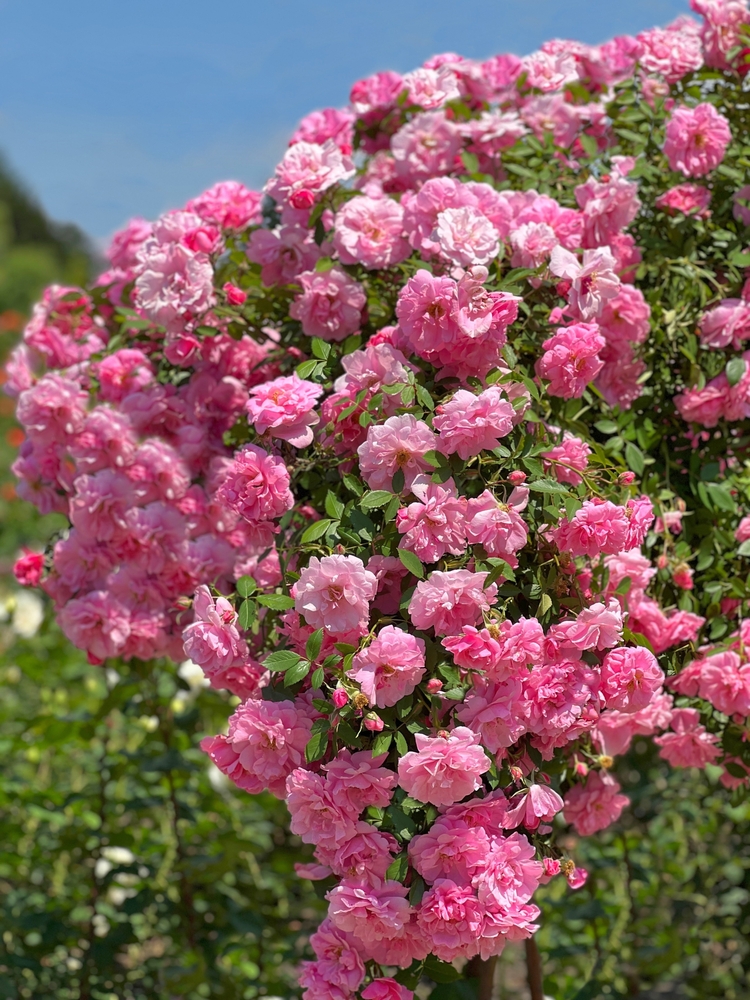
Introducing Climbing Roses: Facts and Figures
Climbing roses are a spectacular addition to any garden, offering not just beauty and fragrance but also versatility in landscaping. These vigorous plants can transform fences, walls, trellises, and arbors into living floral displays. Here's a closer look at what makes climbing roses a favorite among gardeners.Biology and Varieties
Climbing roses are not a specific species but rather a group of various rose species and hybrids that exhibit a climbing habit. They produce long canes that can be trained over structures, creating a vertical element in the garden. Unlike their bush-form counterparts, climbers can reach heights of 10 to 20 feet, depending on the variety and growing conditions. Many climbing roses are known for their repeated blooming ability, offering flowers from early summer into autumn. The blooms come in a wide range of colours and can vary in size from small and delicate to large and showy. Some popular varieties include 'New Dawn,' 'Eden,' and 'Climbing Peace.'Planting and Care
For optimal growth, climbing roses should be planted in a location that receives at least six hours of sunlight daily. They prefer well-drained soil rich in organic matter. When planting, it's crucial to provide enough space for air circulation to prevent disease. Training climbing roses involves tying the canes to a support structure as they grow. This not only helps the plant maintain its desired form but also encourages more blooms, as flowers tend to form on horizontal branches. Regular pruning is essential for the health and vigor of climbing roses. The best time to prune is during the dormant season, removing dead or diseased wood and thinning out crowded areas. This promotes better air circulation and allows sunlight to reach the inner parts of the plant.Benefits and Uses
Climbing roses add a sense of romance and elegance to the garden. They can be used to cover unsightly walls or fences, create privacy screens, or serve as the focal point when grown over arches and pergolas. Their fragrant blooms attract pollinators, contributing to the biodiversity of the garden. In addition to their aesthetic appeal, climbing roses can also have practical applications. For example, when grown against a house wall, they can help to insulate the building, reducing heating and cooling costs.Conclusion
Climbing roses are a versatile and rewarding choice for gardeners looking to add height, colour, and fragrance to their outdoor spaces. With proper care and maintenance, these beautiful plants can thrive and bring joy for many years. Whether you're an experienced gardener or just starting out, climbing roses offer endless possibilities for enhancing your garden's beauty and functionality.The History of a Climbing Roses in the UK
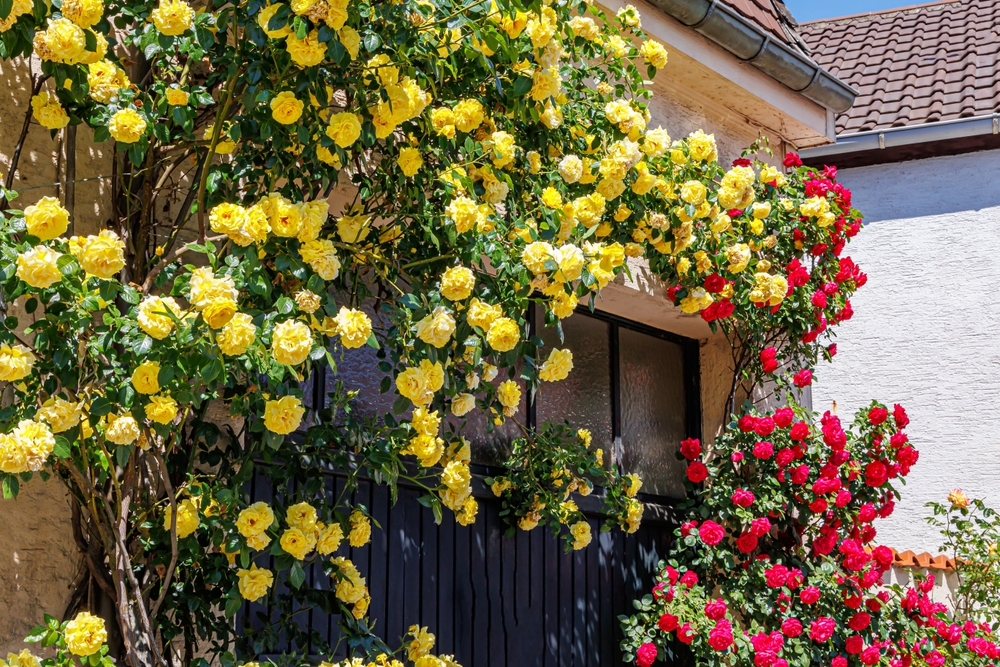
The History of Climbing Roses in the UK
The United Kingdom has a long and rich history with roses, including the beloved climbing varieties that adorn many a British garden today. From royal emblems to horticultural innovations, the journey of climbing roses in the UK is a fascinating tale of beauty, breeding, and the universal appeal of these enchanting plants.Royal Symbols and Medieval Preferences
The rose's association with royalty and England itself dates back centuries. Eleanor of Provence, upon her marriage to Henry III in 1236, adopted the white rose as her symbol, marking one of the earliest uses of the rose as a royal emblem in England. This tradition carried on through the ages, with the red rose later becoming a preferred choice for gardens and decoration during Medieval times, likely spearheaded by the popularity of the Rosa gallica.Introduction and Hybridization
The introduction of climbing roses to the West, particularly from the British perspective, began in earnest in the early 19th century. The British were instrumental in bringing the first two cultivars to Western gardens in 1810 and 1824, sparking a fervor for hybridization among French horticulturists. This period marked the beginning of a global fascination with breeding new rose varieties, including climbers that would eventually grace many an English garden wall and trellis.Early Climbers and Modern Innovations
Most early climbing roses originated from sports of Hybrid Teas, a group that includes notable varieties such as 'Mrs. Sam McGredy' and 'Etoile de Hollande'. Over time, breeders expanded their efforts to other groups, leading to a diverse array of climbing roses with various characteristics and colours. A significant milestone in the history of climbing roses in the UK came in 1972 when Harkness Roses introduced 'Compassion' into Britain. Lauded as one of the best modern climbers, 'Compassion' became a popular choice among British gardeners, revered for its beauty, fragrance, and hardiness.The Legacy Continues
The UK's love affair with climbing roses has never waned. Historical gardens, such as Sissinghurst, document purchases and plantings of roses, reflecting the ongoing passion for these plants among British horticulturists and garden enthusiasts alike. The Kiftsgate Rose, Rosa filipes 'Kiftsgate', stands as a testament to the vigor and splendor of climbing roses, named after the house garden where it was famously identified by Graham Stuart Thomas.Conclusion
The history of climbing roses in the UK is a tapestry woven with royalty, innovation, and a deep-seated appreciation for natural beauty. From the regal symbols of the past to the horticultural achievements that brought us varieties like 'Compassion', climbing roses have secured their place in the heart of British culture and gardens. Their enduring legacy continues to inspire and enchant, making climbing roses a cherished part of the UK's botanical heritage.Understanding the Different Variations of Species of a Climbing Roses, ideal for UK Conditions
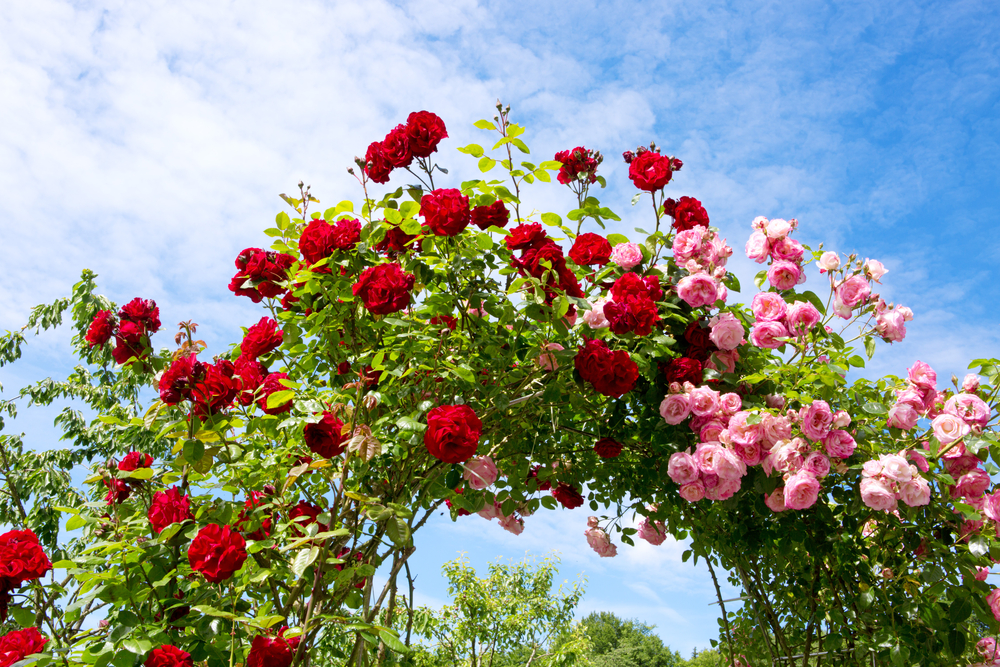 Understanding the variations and species of climbing roses well-suited for UK conditions is crucial for gardeners who wish to add these beautiful, versatile plants to their gardens. The UK's temperate climate allows for a wide range of climbing roses to thrive, offering gardeners an array of options in terms of height, colour, fragrance, and blooming periods.
Understanding the variations and species of climbing roses well-suited for UK conditions is crucial for gardeners who wish to add these beautiful, versatile plants to their gardens. The UK's temperate climate allows for a wide range of climbing roses to thrive, offering gardeners an array of options in terms of height, colour, fragrance, and blooming periods.
Ideal Climbing Roses for UK Gardens
- 1. 'The Generous Gardener' - Celebrated for its soft pink petals and delightful fragrance, 'The Generous Gardener' is a popular choice among UK gardeners. This variety is known for its disease resistance and ability to perform well in partial shade, making it a versatile option for various garden locations.
- 2. English Rose Climbers - David Austin's English Roses are renowned for their exceptional beauty and scent. Varieties such as 'Gertrude Jekyll' and 'Tess of the d'Urbervilles' have been specifically bred to excel as climbers, offering not only visual appeal but also robust health and repeat flowering throughout the season.
- 3. 'Bridge of Sighs' (Harglowing) - This climbing rose stands out with its vibrant orange blooms and strong fragrance. It's an excellent choice for adding a splash of colour and scent to archways and pergolas.
- 4. Rambling vs. Climbing Roses - Understanding the difference between rambling and climbing roses is key for UK gardeners. Ramblers tend to grow more vigorously and are ideal for covering large structures quickly, while climbers are better suited for more controlled training on walls, fences, and trellises. 'Paul’s Himalayan Musk' is a popular rambler, whereas 'Climbing Iceberg' is a well-loved climber for its hardiness and prolific white blooms.
- 5. Less Vigorous Forms - For smaller gardens or more contained spaces, less vigorous forms of climbing roses, such as certain shrub roses grown as climbers, are ideal. These can be trained up obelisks or tripod supports within borders, adding height without overwhelming the space.
Care and Considerations
When selecting climbing roses for your UK garden, consider the following:- - Sunlight: Most climbing roses require at least six hours of sunlight daily to thrive.
- - Soil: Well-drained, fertile soil enriched with organic matter will support healthy growth.
- - Pruning: Regular pruning is essential to maintain shape, encourage blooming, and prevent disease.
- - Support: Ensure you have appropriate structures in place for your climbing roses to grow on, such as trellises, arches, or fences.
Notable Varieties of Climbing Roses
- 1. Danse Du Feu (Rosa 'Danse Du Feu') - Known for its vibrant orange-red blooms, this variety adds a fiery touch to any garden. It's appreciated for its continuous flowering throughout the summer months.
- 2. Souvenir Du Docteur Jamain (Rosa 'Souvenir du Docteur') - This climbing rose is celebrated for its deep, velvety crimson flowers and strong fragrance, making it a favorite among those who prefer darker roses.
- 3. Bridge of Sighs (Harglowing) - With its sumptuous apricot-orange blooms, 'Bridge of Sighs' offers both stunning visuals and a delightful scent. It's a great choice for adding warmth to garden designs.
- 4. Chawton Cottage (Harxel) - This variety boasts beautiful, densely packed pink flowers. Its compact growth habit makes it ideal for smaller spaces or growing in containers.
- 5. 'Compassion' - Renowned for its large, salmon-pink blooms and powerful fragrance, 'Compassion' is a highly disease-resistant variety, making it a practical and beautiful choice for UK gardens.
- 6. Claire Austin (Ausprior) - Bearing creamy-white flowers that exude a strong myrrh fragrance, 'Claire Austin' is prized for its elegance and robust climbing habit.
- 7. 'New Dawn' - A classic choice among climbing roses, 'New Dawn' features delicate pink blooms and a gentle fragrance. It's known for its exceptional hardiness and repeat flowering ability.
- 8. 'The Generous Gardener' - This variety produces soft pink flowers with a strong, old rose fragrance. It's a versatile climber, suitable for walls, trellises, and arches.
- 9. 'Golden Showers' - Offering bright yellow blooms throughout the summer, 'Golden Showers' is a vigorous climber with a mild, sweet fragrance. It's particularly attractive for creating sunny, cheerful displays.
Every rose grower or rose fanatic will have their own favourites. For our best ten climbing roses, we list mainly older varieties that have stood the test of time.
Allgold - ; Florib; Golden Yellow; Scented
Altissimo - Cluster; Red - long flowering; Scented
Bantry Bay - Cluster; Pink semi-double.; Scented
Casino - Hybrid Tea; Yellow; Scented
Danse de Feu - Perpetual Fl.; Scarlet; Slight Scent
Ena Harkness * - Hybrid Tea; Deep Red; Deep Scent
Golden Showers - Perpetual Fl.; Deep golden yellow; Slight Scent
Handel - Florib.; Cream with carmine edges; Scented
Iceberg - Florib.; White; Slight Scent
New Dawn - Perpetual Fl.; Pink; Scented
Paul's Scarlet - Florib.; Scarlet; Scented
School Girl - Hybrid Tea; Carmine and Silver; Deep Scent
Climbing Rose: Ena Harkness. The shrub version of this would not get a mention because of its drooping blooms habit. As a climber, this is an attractive feature.
Conclusion
Climbing roses offer a myriad of options for enhancing the beauty, fragrance, and biodiversity of UK gardens. By choosing varieties well-suited to the UK's climate and conditions—and providing them with proper care—gardeners can enjoy the spectacular display of these magnificent plants for years to come. Whether draped over an archway, climbing up a wall, or adding vertical interest to borders, climbing roses are a timeless addition to any garden.When is the Best Time of the Year to Plant a Climbing Roses in the UK
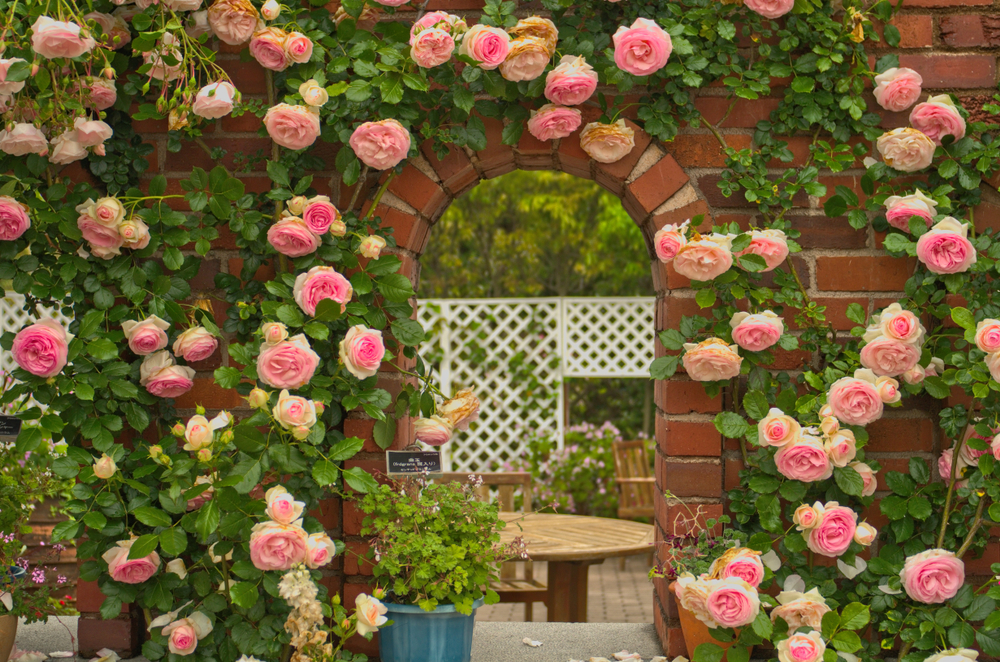 The best time to plant climbing roses in the UK varies depending on whether you are planting bare-root or potted roses.
For bare-root roses, it is recommended to plant them in late autumn and early winter before growth resumes in the spring. It's important to avoid planting during icy conditions. The Royal Horticultural Society also advises planting bare-root roses in late autumn at leaf fall, and from late winter to early spring, before growth resumes. Gardeners are advised to avoid planting in the middle of winter when the ground is frozen.
On the other hand, potted climbing roses can be planted at any time of the year. The key consideration is to avoid planting when the ground is frozen, waterlogged, or in drought conditions. David Austin Roses suggests that although potted roses can technically be planted year-round, it's best to avoid these extreme weather conditions to give your plant the best start.
In summary, for the UK's climate, the optimal times to plant climbing roses are:
The best time to plant climbing roses in the UK varies depending on whether you are planting bare-root or potted roses.
For bare-root roses, it is recommended to plant them in late autumn and early winter before growth resumes in the spring. It's important to avoid planting during icy conditions. The Royal Horticultural Society also advises planting bare-root roses in late autumn at leaf fall, and from late winter to early spring, before growth resumes. Gardeners are advised to avoid planting in the middle of winter when the ground is frozen.
On the other hand, potted climbing roses can be planted at any time of the year. The key consideration is to avoid planting when the ground is frozen, waterlogged, or in drought conditions. David Austin Roses suggests that although potted roses can technically be planted year-round, it's best to avoid these extreme weather conditions to give your plant the best start.
In summary, for the UK's climate, the optimal times to plant climbing roses are:- - Bare-root roses: Late autumn to early winter, and late winter to early spring, avoiding icy and frozen ground conditions.
- - Potted roses: Any time of the year, with caution against planting during frozen, waterlogged, or drought conditions.
Choosing the Right Location to Plant Out your a Climbing Roses
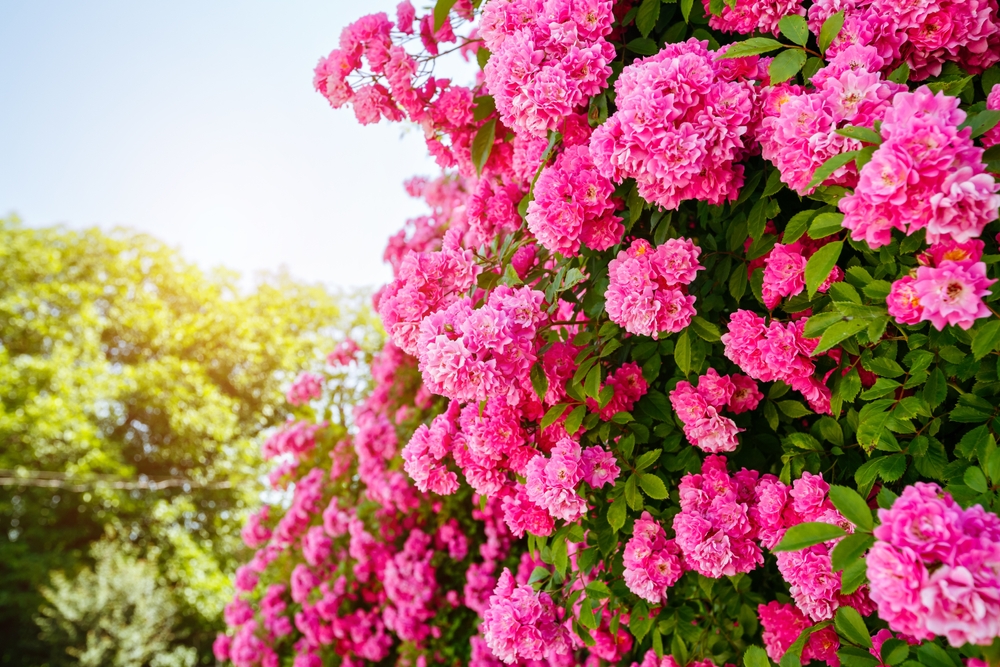 Choosing the right location to plant your climbing roses is crucial for their health, growth, and flowering performance. Here are key considerations to help you select the ideal spot in your garden:
Choosing the right location to plant your climbing roses is crucial for their health, growth, and flowering performance. Here are key considerations to help you select the ideal spot in your garden:
1. Sunlight
Climbing roses thrive in a location that receives at least six hours of direct sunlight each day. The more sunlight they get, the better they will bloom. Morning sun is particularly beneficial as it helps dry dew on the leaves, reducing the risk of diseases.2. Soil Quality
Roses prefer rich, well-drained soil. Before planting, enrich the soil with organic matter such as compost or well-rotted manure to improve fertility and drainage. A slightly acidic to neutral pH (around 6.0 to 7.0) is optimal for climbing roses.3. Air Circulation
Good air circulation is important to prevent fungal diseases like blackspot and powdery mildew. Ensure the planting site isn't too cramped and allows for plenty of airflow around the plant. Avoid overly windy spots, however, as strong winds can damage the canes and flowers.4. Support Structure
Since climbing roses need support to grow vertically, choose a location near a wall, fence, trellis, or arbor that can support the weight of the rose as it matures. Consider the mature size of the rose when selecting your support structure to ensure it's adequate.5. Water Availability
While climbing roses need well-drained soil, they also require consistent moisture, especially during their first few years and in periods of drought. Planting them in a location where you can easily water them deeply and regularly is important.6. Distance from Other Plants
Climbing roses should be planted far enough away from other plants so they don’t have to compete for nutrients, water, and sunlight. This spacing also helps improve air circulation around the roses.7. Aspect
In the UK, a south or west-facing aspect is generally preferred because it provides the most sunlight and warmth, encouraging healthy growth and abundant flowering. North-facing walls and fences are less ideal as they receive less sunlight, but some shade-tolerant varieties may still perform well in these conditions.Preparing the Site
Once you've selected the perfect spot, prepare the site by:- - Removing weeds and debris.
- - Digging a hole large enough to accommodate the root system comfortably.
- - Incorporating generous amounts of organic matter into the soil.
Preparing the Soil for Planting the an Climbing Roses
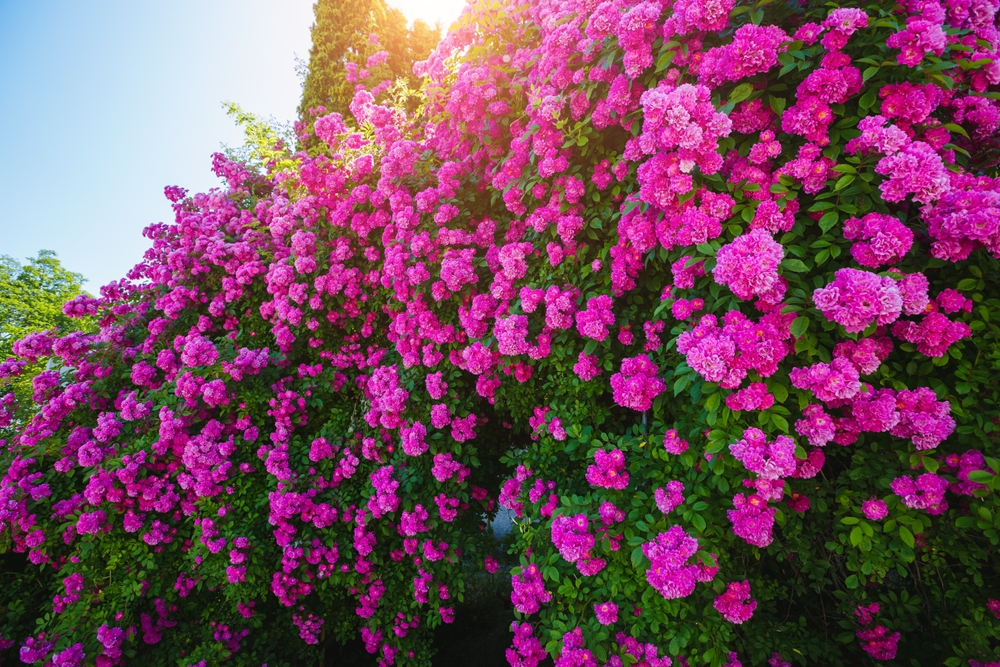 Preparing the soil correctly is a crucial step in planting climbing roses, as it sets the foundation for healthy growth and vibrant blooms. Here's a comprehensive guide to preparing the soil for your climbing roses:
Preparing the soil correctly is a crucial step in planting climbing roses, as it sets the foundation for healthy growth and vibrant blooms. Here's a comprehensive guide to preparing the soil for your climbing roses:
1. Test the Soil
Before you begin, it’s wise to test your soil’s pH level and nutrient content. Climbing roses generally prefer a pH between 6.0 and 7.0. If your soil is too acidic or alkaline, you’ll need to adjust it accordingly, using garden lime to raise the pH or sulfur to lower it.2. Choose the Right Location
Select a location that receives at least six hours of direct sunlight daily and offers good air circulation. Avoid spots where roses have been grown previously to prevent "rose sickness," a condition where new roses struggle due to depleted soil.3. Clear the Area
Remove all weeds, grass, stones, and debris from the planting area. This helps prevent competition and reduces the risk of disease.4. Improve Soil Structure
Climbing roses thrive in rich, well-drained soil. Most garden soils can be improved by incorporating organic matter: - For heavy clay soils, add plenty of well-rotted manure, compost, or leaf mold to improve drainage. - For sandy soils, incorporate organic matter to enhance water retention and nutrient levels.5. Digging the Hole
When you’re ready to plant, dig a hole that is wide and deep enough to comfortably accommodate the root system of your climbing rose. A good rule of thumb is to make the hole twice as wide and the same depth as the root ball or bare-root spread.6. Amend the Soil
Mix the removed soil with well-rotted organic matter. A handful of bone meal added to the mix can encourage strong root growth. If your soil is particularly poor, consider replacing some of it with a quality topsoil or a specially formulated rose planting mix.7. Position the Rose
Before placing the rose in the hole, arrange the roots gently and trim any that are broken or excessively long. For bare-root roses, form a small mound of soil in the center of the hole to support the plant and spread the roots around it.8. Planting Depth
Ensure the graft union (the swollen part where the stems join the roots) is just below the soil surface in colder regions or at ground level in warmer areas. This positioning protects the graft union and promotes stability.9. Watering In
After planting, water the rose thoroughly to settle the soil around the roots and eliminate air pockets. A slow, deep watering method is best.10. Mulching
Apply a 2-3 inch layer of organic mulch around the base of the rose to conserve moisture, suppress weeds, and maintain soil temperature. Be sure to leave some space around the stem to prevent rot. By carefully preparing the soil and planting site, you give your climbing roses the best possible start. Well-prepared soil not only supports the health and vigor of your roses but also enhances their ability to withstand pests and diseases, ensuring a stunning display of blooms for years to come.The Step-by-Step Guide on How to Plant a Climbing Roses in the UK
 Planting a climbing rose with the aid of a trellis in the UK involves careful preparation and attention to detail to ensure your rose thrives. Here's a step-by-step guide to help you plant your climbing rose successfully:
Planting a climbing rose with the aid of a trellis in the UK involves careful preparation and attention to detail to ensure your rose thrives. Here's a step-by-step guide to help you plant your climbing rose successfully:
1. Choose the Right Location
Select a spot that gets at least six hours of direct sunlight daily. Ensure good air circulation to reduce disease risk, and choose a location near a trellis or support structure the rose can climb on.2. Prepare the Soil
Before planting, enrich the soil by incorporating generous amounts of well-rotted manure or compost to improve fertility and drainage. If necessary, adjust the soil pH to between 6.0 and 7.0 using lime (to raise pH) or sulfur (to lower pH).3. Install the Trellis
If not already in place, install your trellis or support structure. It should be sturdy enough to support the rose as it grows and matures. Position it slightly away from the wall or fence to ensure good air circulation.4. Dig the Planting Hole
Dig a hole that is twice as wide and just as deep as the root ball of your climbing rose. The hole should be located about 12-18 inches away from the base of the trellis to allow room for root growth.5. Prepare the Rose for Planting
If your rose is potted, water it thoroughly before planting. For bare-root roses, soak the roots in water for 24-48 hours to rehydrate them. Trim any damaged or excessively long roots.6. Plant the Rose
Position the rose in the hole so that the base of the cane (where it meets the roots) is at soil level. For colder regions, positioning the graft union (the swollen part where the rose is grafted onto the rootstock) a few inches below the soil surface can offer extra protection. Backfill the hole with the enriched soil, gently firming down around the roots to eliminate air pockets. Water thoroughly to settle the soil.7. Tie the Rose to the Trellis
Using soft garden twine or strips of fabric, gently tie the main canes of the rose to the trellis. Arrange the canes as horizontally as possible to encourage more blooms along the length of the cane.8. Mulch and Water
Apply a 2-3 inch layer of organic mulch around the base of the rose to conserve moisture, suppress weeds, and maintain even soil temperatures. Leave a small gap around the stem to prevent rot. Water the rose deeply once a week, more frequently during hot, dry periods, to establish a healthy root system.9. Ongoing Care
As the rose grows, continue to tie new growth to the trellis, aiming to create an evenly distributed framework of stems. Prune as necessary to maintain shape and remove any dead or diseased wood. By following these steps, you'll provide your climbing rose with the best possible start in your UK garden. With proper care and attention, your climbing rose will reward you with beautiful blooms for many seasons to come.How Far apart must a Climbing Roses be Planted to make a hedge?
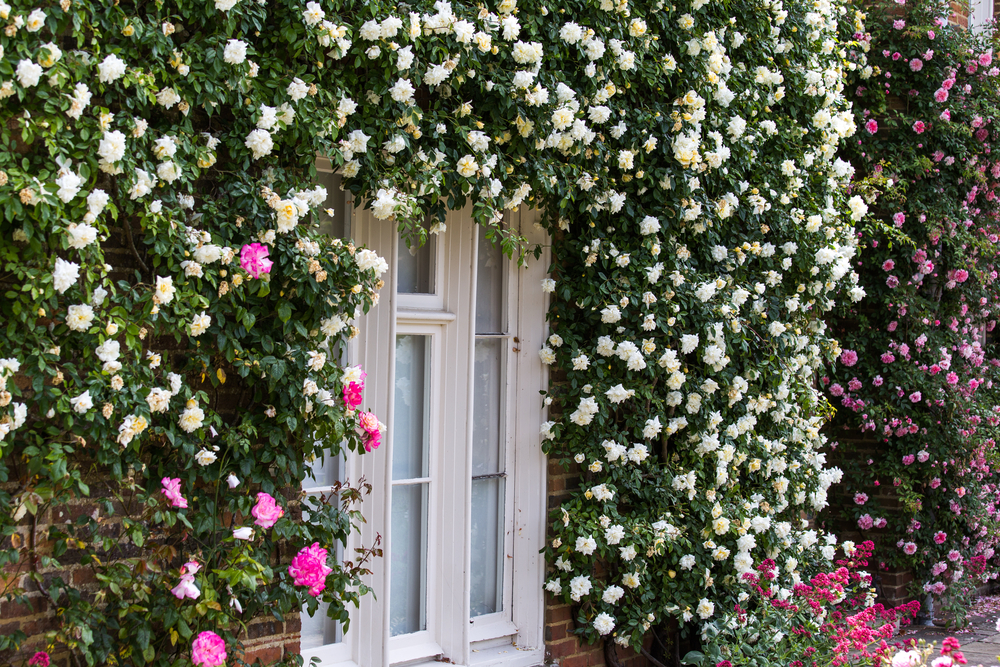 When planting climbing roses to form a screen or to decorate a structure like a trellis or fence, spacing is an important consideration to ensure they grow well and display their full beauty. According to advice from Jackson's Nurseries, for climbing roses intended to ultimately form a screen, such as hiding an unsightly shed or storage area, they should be planted approximately 120cm (about 4 feet) apart. If you desire a more open or airy effect, or if the climbing roses are particularly vigorous growers, consider spacing them about 180cm (approximately 6 feet) apart.
This guidance helps ensure that each rose has enough space to receive adequate sunlight, air circulation, and nutrients from the soil, which are crucial factors for their health and flowering capability. Proper spacing also helps minimize the risk of disease by ensuring good airflow around the plants.
When planting climbing roses to form a screen or to decorate a structure like a trellis or fence, spacing is an important consideration to ensure they grow well and display their full beauty. According to advice from Jackson's Nurseries, for climbing roses intended to ultimately form a screen, such as hiding an unsightly shed or storage area, they should be planted approximately 120cm (about 4 feet) apart. If you desire a more open or airy effect, or if the climbing roses are particularly vigorous growers, consider spacing them about 180cm (approximately 6 feet) apart.
This guidance helps ensure that each rose has enough space to receive adequate sunlight, air circulation, and nutrients from the soil, which are crucial factors for their health and flowering capability. Proper spacing also helps minimize the risk of disease by ensuring good airflow around the plants.
Tips for Caring for Your Newly Planted a Climbing Roses
 Caring for newly planted climbing roses is crucial to ensure they establish well and flourish in your garden. Here are some essential tips to help you care for your climbing roses during their initial growth period and beyond:
Caring for newly planted climbing roses is crucial to ensure they establish well and flourish in your garden. Here are some essential tips to help you care for your climbing roses during their initial growth period and beyond:
1. Watering
- Regular Watering: Newly planted roses need consistent moisture to establish their root systems. Water them deeply once or twice a week, depending on weather conditions, ensuring the water penetrates the soil deeply. - Avoid Overhead Watering: Water at the base of the plant to keep the leaves dry and minimize the risk of fungal diseases.2. Mulching
- Apply Mulch: Surround the base of your climbing rose with a 2-3 inch layer of organic mulch, such as well-rotted manure, compost, or bark chips. This helps retain soil moisture, suppress weeds, and maintain a stable soil temperature. - Keep Mulch Away from Stems: Ensure the mulch is not touching the stems of your roses to prevent rot.3. Feeding
- Fertilize Wisely: After planting, wait until your climbing roses have produced their first blooms before applying any fertilizer. Use a balanced rose fertilizer according to the product instructions, typically in early spring as growth resumes and again in midsummer to encourage continuous blooming. - Organic Options: Consider using well-rotted manure or compost as an organic feeding option, which can also help improve soil structure.4. Support and Training
- Provide Support: Ensure your climbing roses are tied to their support structure (trellis, fence, or arch) using soft ties that won't damage the stems. This helps prevent wind damage and encourages the plant to grow in the desired direction. - Train Your Rose: Encourage horizontal growth by gently bending and tying the canes to the support. This promotes more lateral shoots, leading to increased flowering.5. Pruning
- Initial Pruning: Lightly prune your climbing roses to shape them and encourage strong, healthy growth. Remove any dead or damaged wood. - Regular Maintenance: As your roses establish, annual pruning will be necessary to maintain their shape, encourage air circulation, and remove any old or unproductive wood.6. Disease and Pest Control
- Monitor Regularly: Keep an eye out for signs of pests or diseases, such as black spot, powdery mildew, or aphids. Early detection is key to effective control. - Use Appropriate Treatments: Choose treatments that are specifically labeled for use on roses, and follow the manufacturer's instructions carefully. Preferably, opt for organic or environmentally friendly options.7. Patience
- Give Them Time: Remember that climbing roses may take a few years to fully establish and reach their peak flowering potential. Be patient and provide consistent care, and you'll be rewarded with beautiful blooms. By following these care tips, you can help your newly planted climbing roses thrive and become a stunning feature in your garden for many years to come.What is the Best Fertilizer Feed for a Climbing Roses and When to Apply it?
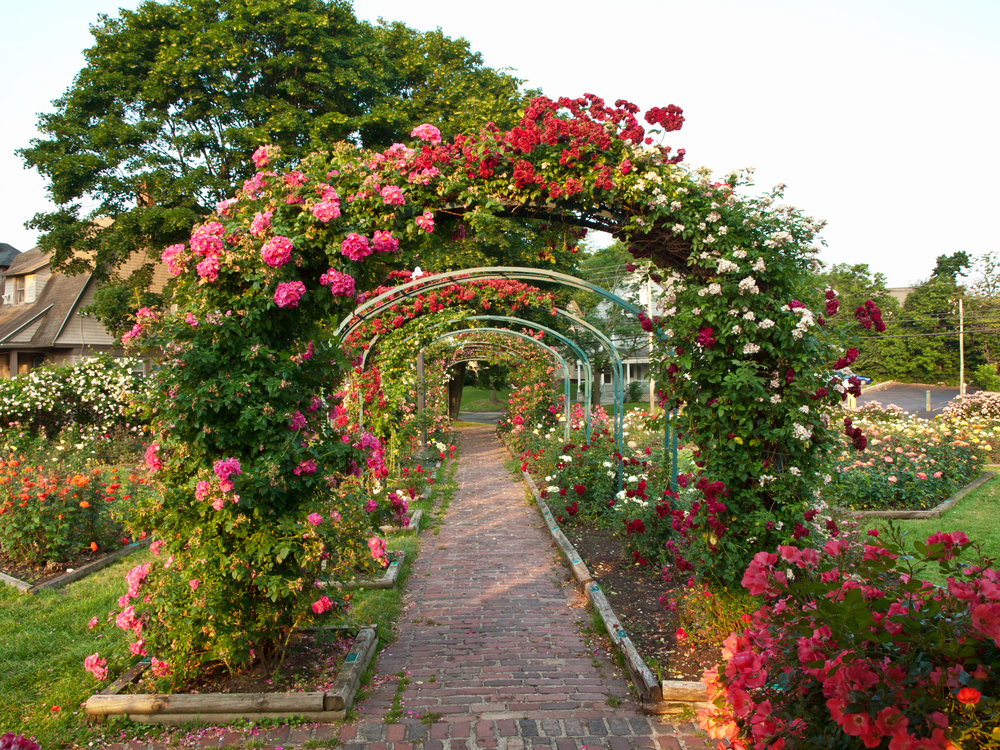 For climbing roses, selecting the right fertilizer and knowing when to apply it are key factors in promoting healthy growth and vibrant blooms. Based on the information gathered, the best approach involves using a balanced fertilizer with an emphasis on nitrogen and potassium to support both foliage growth and flowering.
For climbing roses, selecting the right fertilizer and knowing when to apply it are key factors in promoting healthy growth and vibrant blooms. Based on the information gathered, the best approach involves using a balanced fertilizer with an emphasis on nitrogen and potassium to support both foliage growth and flowering.
Best Fertilizer for Climbing Roses
A good quality fertilizer with a balanced or slightly higher ratio of nitrogen (N) and potassium (K) is ideal. For instance, formulations with an NPK ratio of 4-6-4 or 2-4-2 are recommended to provide enough power for blooming without risking harm to the roses. High-nitrogen fertilizers or organic options like alfalfa meal (5-1-2) can be used for the first application in early spring to kickstart growth.When to Apply Fertilizer
- - Early to Mid-Spring: Begin fertilizing when new leaves emerge. This initial feeding supports the vigorous growth of leaves and stems.
- - Throughout the Growing Season: Continue to feed your climbing roses throughout the growing season to support ongoing bloom production. As advised by David Austin Roses, spreading the food evenly around the base of the rose, to the width of the canopy, ensures that the nutrients are readily available to the plant's roots. For climbing roses, applying approximately 2oz of fertilizer per rose is recommended.
- - Avoid Late Season Fertilization: Cease fertilizing in late summer to avoid encouraging new growth that might be damaged by early frosts.
Additional Tips
- - Compost: Incorporating compost around the base of your climbing roses can provide a slow-release source of nutrients and improve soil health.
- - Liquid Fertilizers: For those preferring liquid fertilizers, products like Neptune's Harvest Fish Fertilizer, which contains all the macronutrients naturally found in fish, can be an excellent choice for providing balanced nutrition.
How Fast does a Climbing Roses Grow
 Climbing roses are known for their beauty and their ability to fill a garden space with vibrant colours and fragrances. However, patience is key when cultivating these plants, as they take time to reach their full potential. Based on various sources, here's an overview of how fast climbing roses grow and what you can expect in terms of their development:
Climbing roses are known for their beauty and their ability to fill a garden space with vibrant colours and fragrances. However, patience is key when cultivating these plants, as they take time to reach their full potential. Based on various sources, here's an overview of how fast climbing roses grow and what you can expect in terms of their development:
Growth Timeline
- - Initial Year: When first planted, climbing roses focus on establishing their root systems. During this period, visible growth above ground may be limited. It's important during this time to provide them with the care they need to establish well.
- - Second and Third Years: In the second and third years, you'll start to see more significant growth in both the height and spread of the plant. This is when the climbing rose begins to develop its framework of canes.
- - Three to Five Years: Climbing roses typically reach full maturity and maximum bloom production within three to five years after planting. By this time, they should have developed a robust structure capable of supporting numerous blooms.
Factors Influencing Growth Rate
The growth rate of climbing roses can be influenced by several factors, including:- - Variety: Different varieties of climbing roses may grow at different rates. Some may reach their mature height more quickly than others.
- - Care: Adequate watering, proper fertilization, and disease prevention can all impact how well and how quickly a climbing rose grows.
- - Pruning: Regular pruning is essential for climbing roses. It encourages healthy growth and bloom production. Removing twiggier stems from the base can help develop a taller climber more rapidly.
- - Environment: The local climate, sunlight availability, and soil conditions can significantly affect the growth rate of climbing roses.
What to Expect
- - Climbing roses can grow quite tall, with some varieties reaching over 10 feet in height after about three years.
- - Full maturity, where the plant fills out and produces the maximum number of blooms, generally takes between three to five years.
How to Propagate a Climbing Roses - List the most Common Methods
 Propagating climbing roses can be a rewarding way to expand your garden or share your favorite varieties with friends and family. There are several common methods for propagating these beautiful plants, each with its own set of steps and considerations. Here are the most frequently used techniques:
Propagating climbing roses can be a rewarding way to expand your garden or share your favorite varieties with friends and family. There are several common methods for propagating these beautiful plants, each with its own set of steps and considerations. Here are the most frequently used techniques:
1. Softwood Cuttings
This method is often recommended for best results and involves taking cuttings from new, healthy growth in late spring to early summer. Here’s how you do it:- - Choose pencil-sized stems just beneath a faded bloom or at the top of the rose.
- - Cut a piece of stem about 4-8 inches long, ensuring it has at least three nodes (points where leaves attach).
- - Remove the bloom and any lower leaves, leaving one or two pairs of leaves at the top.
- - Dip the bottom end of the cutting in rooting hormone to encourage root development.
- - Plant the cuttings in a pot filled with a mix of potting soil and perlite or sand to ensure good drainage.
- - Keep the soil moist but not waterlogged, and place the pot in a warm, bright spot out of direct sunlight until roots develop.
2. Layering
Layering is a simple method that involves encouraging a stem to root while it's still attached to the parent plant. It works well with climbing roses due to their flexible canes. Here’s the process:- - Select a long, healthy cane that can be bent down to the ground.
- - Make a small incision or notch on the underside of the cane where it touches the soil.
- - Bend the cane down and bury the notched section in the soil, securing it in place with a U-shaped pin.
- - Leave the tip of the cane exposed above the soil.
- - Keep the area moist, and over time, roots will develop at the notch. Once established, the new plant can be severed from the parent and transplanted.
3. Hardwood Cuttings
This method is typically done in late autumn or early winter when the plant is dormant:- - Select a healthy cane that has finished flowering and cut it into sections 6-8 inches long, ensuring each section has several nodes.
- - Plant the cuttings in a sheltered, sunny spot in the garden, burying them so that two-thirds of their length is underground.
- - Water them in and wait for spring; roots and new shoots should begin to develop as the weather warms.
4. Water Propagation
Although not as traditional as soil-based methods, water propagation can be a straightforward way to root rose cuttings:- - Take softwood cuttings as described above.
- - Place the cuttings in a jar or vase of water, making sure no leaves are submerged.
- - Change the water every few days to keep it fresh.
- - Once roots have developed, pot the cuttings in soil and care for them as usual.
Step-by-Step Guide on How to Grow a Climbing Roses from Seed
 Growing climbing roses from seed can be a rewarding experience, offering the chance to cultivate unique varieties and witness the full life cycle of these beautiful plants. Although growing roses from seed requires patience, as it takes longer than other propagation methods, the process can be deeply satisfying. Here's a step-by-step guide on how to grow climbing roses from seed:
Growing climbing roses from seed can be a rewarding experience, offering the chance to cultivate unique varieties and witness the full life cycle of these beautiful plants. Although growing roses from seed requires patience, as it takes longer than other propagation methods, the process can be deeply satisfying. Here's a step-by-step guide on how to grow climbing roses from seed:
1. Collect Rose Hips
Wait until the rose hips (the fruit of the rose plant) have ripened on the plant before collecting them. This typically occurs in late autumn or early winter when they turn red or orange.2. Extract Seeds
Carefully open the rose hips to extract the seeds. It's recommended to wear gloves as some rose hips can be prickly, and you should avoid damaging the seeds as you remove them.3. Stratification Process
Rose seeds require a period of cold stratification to break their dormancy and improve germination rates. Mix the seeds with slightly moistened sand or vermiculite, seal them in a plastic bag, and place them in the refrigerator for about 10-12 weeks. This simulates winter conditions.4. Soak the Seeds
After stratification, soak the seeds in water for 24 hours. This helps to soften the seed coat and prepare the seeds for planting.5. Prepare Planting Mix
Use a well-draining seed-starting mix in planting trays or pots. Ensure the mix is moist but not waterlogged.6. Sow the Seeds
Plant the seeds 1/4 inch deep in the seed-starting mix. Cover lightly with soil and gently water the surface.7. Provide the Right Conditions
Seal the planting trays or pots in a plastic bag to maintain humidity and place them in a warm, bright location but out of direct sunlight. The ideal temperature for germination is between 18°C to 21°C (65°F to 70°F).8. Germination
Watch for germination, which can occur as early as two weeks or take several months, depending on the variety and conditions. Keep the soil consistently moist during this period.9. Seedling Care
Once seedlings emerge, remove the plastic covering and ensure they receive plenty of light—either by placing them near a sunny window or under grow lights.10. Transplanting
When seedlings have developed their first set of true leaves and are big enough to handle, carefully transplant them into individual pots filled with potting mix. Continue to keep them in a bright location and water as needed.11. Acclimatization
Before planting outdoors, acclimatize the young plants to outdoor conditions by gradually exposing them to outside temperatures over a week or two.12. Planting Outdoors
Choose a well-prepared site in the garden that receives at least six hours of sunlight daily and has rich, well-draining soil. Plant the seedlings, spacing them according to the expected mature size of the variety.13. Ongoing Care
Water regularly, especially during dry spells, and apply a balanced fertilizer during the growing season. Support the climbing roses with trellises or other structures as they grow. Remember, growing roses from seed is a long-term project, and it may take several years for the plants to bloom. However, the process can be incredibly gratifying for a patient gardener, offering the joy of nurturing roses from their very beginnings.Potential Problems When Growing a Climbing Roses in the UK and Solutions
 Growing climbing roses in the UK can be a rewarding endeavor, but like all gardening pursuits, it comes with its set of challenges. Based on the context provided, here are some potential problems you might face when growing climbing roses and their solutions:
Growing climbing roses in the UK can be a rewarding endeavor, but like all gardening pursuits, it comes with its set of challenges. Based on the context provided, here are some potential problems you might face when growing climbing roses and their solutions:
1. Root Rot Due to Poor Drainage
- Problem: Climbing roses are suitable for growing in clay soils, but prolonged waterlogging can cause root rot.
- Solution: Improve soil drainage by incorporating organic matter such as well-rotted manure or compost into the planting hole and surrounding soil. For container-grown roses, ensure the pot has adequate drainage holes and consider using a soil mix designed for roses which ensures better drainage.
2. Fungal Diseases
- Problem: Roses are susceptible to several fungal diseases, including black spot, powdery mildew, and rose rust.
- Solution: To combat these, adopt a preventive approach by ensuring good air circulation around the plants and watering at the base to keep foliage dry. Remove and destroy affected leaves and apply a fungicide if necessary. Mulching and practicing crop rotation can also help reduce disease incidence.
3. Pests
- Problem: Aphids are common pests that affect rose plants, sucking sap and weakening the plant.
- Solution: Introduce natural predators like ladybirds or use insecticidal soap to control aphid populations. Regularly inspecting plants and removing pests by hand can also be effective.
4. Replant Disease
- Problem: This occurs when new roses are planted where old roses have previously grown, leading to poor growth and establishment.
- Solution: Replace the soil in the planting area with fresh, healthy soil from another part of the garden, or incorporate plenty of organic matter to rejuvenate the soil. Alternatively, plant the new roses in a different location.
5. Dieback
- Problem: Dieback is characterized by the wilting and dying back of rose shoots, often due to damage or fungal infections.
- Solution: Prune affected stems back to healthy tissue and ensure cuts are clean and sharp to prevent further infection. Improving general plant health through adequate feeding and watering can also help.
6. Difficulty in Training
- Problem: Climbing and rambling roses require support and training to grow against structures since they don't naturally cling to walls.
- Solution: Install trellises, wires, or pergolas to support your climbing roses. Regularly tie in new growth and prune according to the plant's training needs to encourage a robust framework.
7. Large Root Systems in Containers
- Problem: The extensive root systems of climbing roses can pose a challenge when grown in pots, particularly for larger varieties.
- Solution: Choose large, deep containers to accommodate the root system and provide adequate room for growth. Ensure regular watering and feeding since container-grown plants can dry out and become nutrient-deficient more quickly than those in the ground.
The Common Diseases and Pests which Affect a Climbing Roses
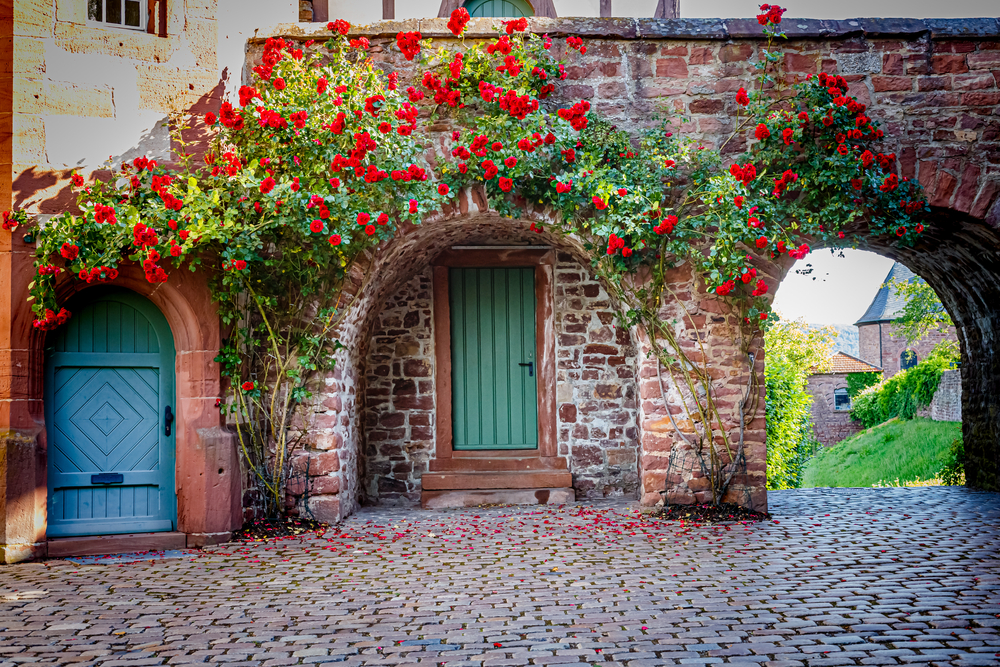 Climbing roses, while a beautiful addition to any garden, are susceptible to a range of diseases and pests that can affect their health and vitality. Understanding these common issues can help gardeners take proactive steps to mitigate them. Here are the most prevalent diseases and pests affecting climbing roses:
Climbing roses, while a beautiful addition to any garden, are susceptible to a range of diseases and pests that can affect their health and vitality. Understanding these common issues can help gardeners take proactive steps to mitigate them. Here are the most prevalent diseases and pests affecting climbing roses:
Diseases
- 1. Black Spot: This fungal disease, caused by *Diplocarpon rosae*, is characterized by dark, circular spots with fringed margins on leaves. It leads to leaf yellowing and drop, weakening the plant over time.
- 2. Powdery Mildew: Caused by the fungus *Podosphaera pannosa*, this disease manifests as a white or gray powdery growth on leaves, stems, and buds. It can distort and stunt new growth if left untreated.
- 3. Rust: Rose rust, caused by various species of the fungus *Phragmidium*, presents as orange or rust-coloured spots on the undersides of leaves. Severe infections can lead to defoliation and reduced plant vigor.
- 4. Stem Canker and Dieback: These conditions are typically caused by fungal pathogens that infect wounds or pruning cuts, leading to sunken, discoloured areas on canes and eventual dieback from the point of infection.
- 5. Root Rot: Often a result of poor drainage or overwatering, root rot can be caused by several fungi, including *Phytophthora* spp. Affected plants may wilt, yellow, and dieback due to root system damage.
Pests
- 1. Aphids: Small, sap-sucking insects that cluster on new growth and under leaves. They can cause leaves to curl and distort, and they excrete a sticky substance (honeydew), which can lead to sooty mold growth.
- 2. Japanese Beetles: These beetles feed on the flowers and foliage of roses, leaving behind skeletonized leaves and damaged blooms.
- 3. Rose Slug Sawfly: Larvae of the sawfly resemble small caterpillars and feed on the underside of rose leaves, creating a windowpane effect by eating the leaf tissue between veins.
- 4. Red Spider Mites: Tiny spider-like pests that thrive in hot, dry conditions. They suck sap from the underside of leaves, causing yellowing, speckling, and sometimes leaf drop.
- 5. Deer and Rabbits: While not insects, deer and rabbits can cause significant damage to roses by eating the buds, leaves, and stems, especially of young plants.
Solutions and Prevention
- - Regular Monitoring: Early detection is key. Regularly inspect your roses for signs of disease or pest activity.
- - Cultural Practices: Ensure good air circulation around plants, water at the base to keep foliage dry, and maintain clean garden hygiene by removing fallen leaves and debris.
- - Fungicide Applications: For fungal diseases, consider using fungicides, following label instructions carefully. Organic options include neem oil and sulfur-based products.
- - Insect Control: Insecticidal soaps or oils (like neem oil) can be effective against aphids and mites. Physical removal or traps may be necessary for larger pests like Japanese beetles.
- - Physical Barriers: Protecting roses with netting or fencing can help deter deer and rabbits.
A Complete Guide to Pruning a Climbing Roses in the UK
Why Do we Need to Prune a Climbing Roses?
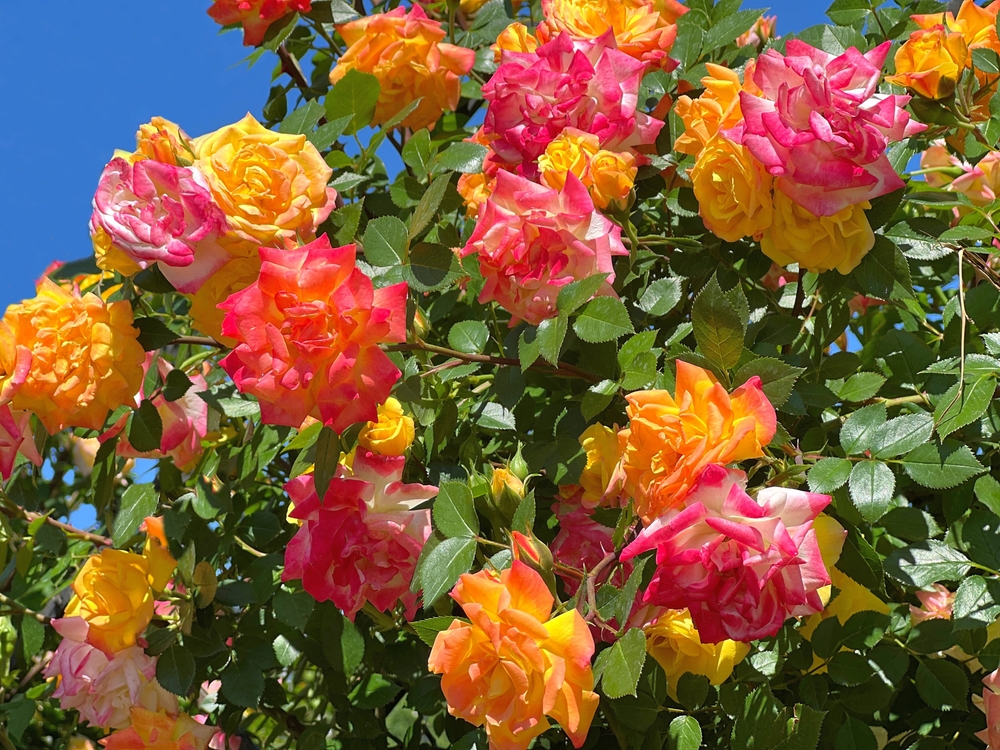 Pruning climbing roses is an essential gardening practice that serves several important purposes, contributing to the health, aesthetics, and productivity of the plants. Here are the key reasons why pruning climbing roses is necessary:
Pruning climbing roses is an essential gardening practice that serves several important purposes, contributing to the health, aesthetics, and productivity of the plants. Here are the key reasons why pruning climbing roses is necessary:
1. Promotes Healthy Growth
Pruning helps to remove dead, diseased, or damaged wood, which can otherwise become a breeding ground for pests and diseases. By cutting away this unhealthy growth, you're not only tidying up the plant but also preventing potential issues from spreading to the rest of it. This encourages the development of strong, healthy new growth.2. Improves Air Circulation
By thinning out the plant, especially in its center, pruning improves air circulation throughout the climbing rose. Better air flow reduces the humidity around the plant, which is a condition that can promote fungal diseases like black spot and powdery mildew. Improved air circulation helps keep these common rose diseases at bay.3. Enhances Flower Production
Climbing roses typically bloom on either old wood or new growth, depending on the variety. Pruning not only helps to stimulate the development of new flowering shoots but also can encourage larger, more vibrant blooms. By removing weaker or older canes, the plant's energy is directed towards supporting robust growth and flowering.4. Maintains Shape and Size
Without regular pruning, climbing roses can quickly become overgrown and unruly, with a tendency to sprawl in all directions. Pruning allows gardeners to control the size and shape of their climbing roses, ensuring they complement their garden space and grow in the desired direction, whether it be up a trellis, along a fence, or over an arbor.5. Encourages Horizontal Growth
Training and tying in the canes horizontally during the pruning process encourage more lateral growth. This is beneficial because horizontal canes produce more side shoots, which in turn leads to a greater number of flowers. It's a technique that maximizes the floral display of climbing roses.6. Allows for Rejuvenation
Over time, even well-cared-for climbing roses can show signs of aging, with decreased vigor and reduced blooming. Pruning, especially the removal of older canes, can rejuvenate a plant, encouraging fresh growth and restoring its youthful vitality and blooming capacity.7. Optimizes Plant Health
Lastly, regular pruning, by encouraging vigorous growth and improving plant structure, inherently boosts the overall health of the climbing rose. A healthy plant is more resilient to environmental stresses, pests, and diseases. In summary, pruning is a critical aspect of climbing rose care. It not only enhances the aesthetic appeal and performance of these beloved plants but also plays a vital role in maintaining their health and vigor.When is the Best Time to Prune a Climbing Roses?
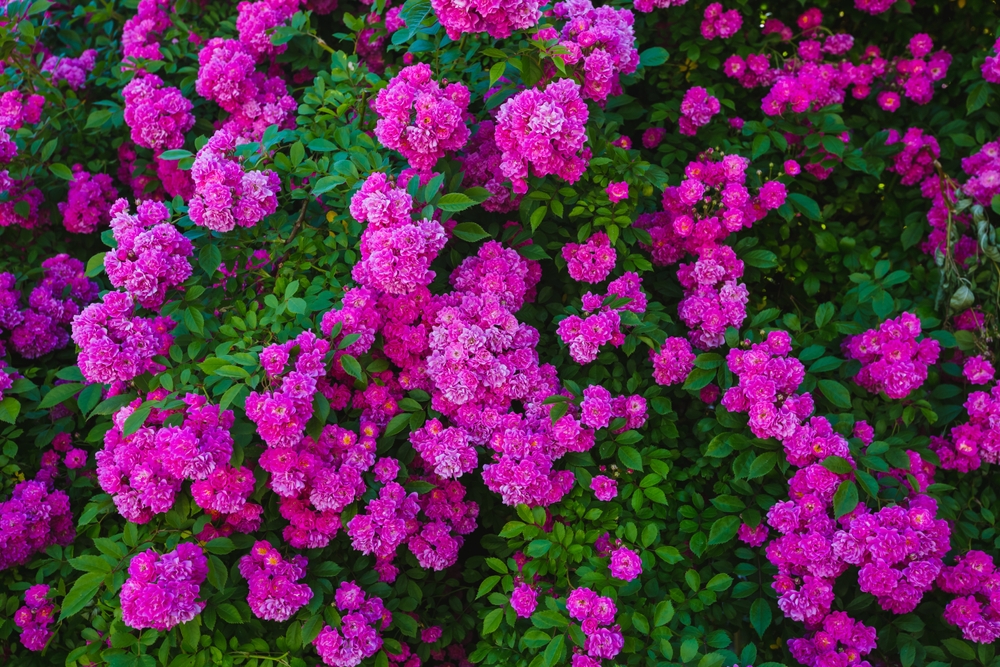 The best time to prune climbing roses is in late winter or early spring, just as the first growth begins to show. This period generally falls between February and April. It's important to time your pruning correctly to ensure the plant has the best chance to heal and produce new growth for the upcoming season. This timing helps stimulate healthy new shoots, which will bear flowers either on the current season's growth or on older branches, depending on the variety of the climbing rose.
Pruning during this dormant period, before the plant puts a significant amount of energy into leaf and stem growth, allows the gardener to shape the rose and direct its energy towards producing a robust framework of canes. This framework supports the season's blooms and contributes to the overall health and vigor of the plant. In some cases, such as with repeat-blooming climbers, a light pruning right after the first flowering can encourage a stronger second bloom.
It's also worth noting that within the first two or three years after planting, climbing roses should not be pruned back heavily, as this can affect their ability to establish a strong structure and may revert them to a bush growth form. After this initial period, regular annual pruning will contribute to a well-maintained, healthy climbing rose that can enjoy abundant blooms for many years.
The best time to prune climbing roses is in late winter or early spring, just as the first growth begins to show. This period generally falls between February and April. It's important to time your pruning correctly to ensure the plant has the best chance to heal and produce new growth for the upcoming season. This timing helps stimulate healthy new shoots, which will bear flowers either on the current season's growth or on older branches, depending on the variety of the climbing rose.
Pruning during this dormant period, before the plant puts a significant amount of energy into leaf and stem growth, allows the gardener to shape the rose and direct its energy towards producing a robust framework of canes. This framework supports the season's blooms and contributes to the overall health and vigor of the plant. In some cases, such as with repeat-blooming climbers, a light pruning right after the first flowering can encourage a stronger second bloom.
It's also worth noting that within the first two or three years after planting, climbing roses should not be pruned back heavily, as this can affect their ability to establish a strong structure and may revert them to a bush growth form. After this initial period, regular annual pruning will contribute to a well-maintained, healthy climbing rose that can enjoy abundant blooms for many years.
A Step by Step Guide on How to Prune a Climbing Roses
 Pruning climbing roses is crucial for their health, vigor, and bloom production. Based on the latest information available, here’s a step-by-step guide to properly prune your climbing roses:
Pruning climbing roses is crucial for their health, vigor, and bloom production. Based on the latest information available, here’s a step-by-step guide to properly prune your climbing roses:
1. Timing
Prune your climbing roses in late winter or early spring, just before or as the leaf buds begin to swell and start growing. This timing helps avoid cutting back the plant too early, which could expose it to damage from late frosts, and ensures that you’re pruning right before the plant enters a period of vigorous growth.2. Preparation
Before starting, ensure your pruning tools are sharp and clean to make precise cuts and reduce the risk of spreading diseases. Wearing gloves and long sleeves can also protect you from thorns.3. Remove Dead, Diseased, or Dying Branches
The first step in pruning is to clear away any unhealthy wood. Look for branches that are dead, diseased, or showing signs of significant damage, and cut these back to healthy tissue. This not only tidies up the plant but also prevents diseases from spreading.4. Tie In New Shoots
Identify new shoots that can be trained to fill out the supports or replace older canes. Gently tie these in place, guiding the growth to cover the desired area and maintain an even distribution of branches across the support structure.5. Prune Side Shoots
For the main canes that are kept, prune back the lateral (side) canes, leaving about three nodes or buds on each. This encourages the development of strong, flowering shoots.6. Prune Flowered Side Shoots
If your climbing rose has already flowered on some side shoots, prune these back by two-thirds of their length. This helps stimulate reblooming and maintains a compact form that enhances the plant's overall appearance.7. Apply Pruning Sealer
After making significant cuts, especially on larger canes, consider applying a pruning sealer to the cut ends. This helps protect the plant from pests and diseases entering through the fresh cuts.8. Clean Up
Once you’ve finished pruning, clean up any fallen debris from around the base of the rose. Removing dead leaves and cut branches helps reduce the likelihood of disease and pest problems later in the season.9. Water and Feed
After pruning, giving your roses a good watering and applying a balanced fertilizer can help kickstart their growth. This ensures they have the nutrients needed to recover from pruning and to produce healthy new growth and blooms. By following these steps, you can ensure your climbing roses are well-maintained, encouraging them to thrive and produce abundant flowers throughout the growing season.How to Hard Prune a Mature a Climbing Roses
 Hard pruning, also known as renovation pruning, is occasionally necessary for mature climbing roses that have become overgrown or are not flowering well. This more drastic form of pruning can rejuvenate an old plant, encouraging vigorous new growth and improved flowering. Here’s a step-by-step guide on how to hard prune a mature climbing rose:
Hard pruning, also known as renovation pruning, is occasionally necessary for mature climbing roses that have become overgrown or are not flowering well. This more drastic form of pruning can rejuvenate an old plant, encouraging vigorous new growth and improved flowering. Here’s a step-by-step guide on how to hard prune a mature climbing rose:
1. Timing
The best time for hard pruning is in late winter or early spring, just before the plant breaks dormancy. This timing helps the rose to recover quickly and make the most of the growing season.2. Assessment
Before starting, assess the overall structure of the plant. Identify the oldest canes (usually thicker, with darker bark) and any dead, diseased, or very weak stems. The goal is to remove much of the old growth while preserving some of the newer, healthier canes to support recovery.3. Preparation
Ensure your tools (bypass pruners, loppers, and a pruning saw for thicker canes) are clean and sharp. Wearing protective gloves and long sleeves can help protect you from thorns.4. Remove Dead and Diseased Wood
Begin by removing all dead, diseased, or damaged wood. Cut these canes back to healthy tissue, making clean cuts just above a bud.5. Select Canes to Remove
Identify which of the older canes to remove completely. In general, aim to remove about one-third to one-half of the oldest canes, depending on the overall condition of the plant. This will open up the plant's center to light and air circulation, encouraging healthy new growth.6. Cut Back Remaining Canes
For the canes that remain, cut them back hard, leaving just a few buds on each cane. This might mean reducing their length by up to two-thirds or even more if the plant is very overgrown.7. Training
After pruning, retrain the remaining canes onto their support structure. Arrange them as horizontally as possible, as this encourages more side shoots to develop along the length of the cane, leading to more flowers.8. Post-Pruning Care
After hard pruning, it’s essential to provide the plant with the care it needs to recover:- - Watering: Ensure the rose is well-watered, especially in dry periods, to support new growth.
- - Feeding: Apply a balanced, slow-release fertilizer around the base of the plant to provide necessary nutrients.
- - Mulching: Add a layer of organic mulch around the base to retain moisture, suppress weeds, and gradually improve soil health.
9. Patience
Recovery from hard pruning can take time. It may be a year or more before the plant returns to its full flowering potential. However, you should start to see vigorous new growth during the first growing season after pruning.10. Monitor and Maintain
Keep an eye on your climbing rose as it recovers. Continue to remove any dead or diseased growth and consider applying a rose-specific fungicide or insecticide if pests or diseases appear. Hard pruning a mature climbing rose can seem drastic, but it’s often the best way to revitalize an old plant, encouraging a fresh burst of growth and a renewed abundance of blooms. Remember, patience and proper aftercare are key to helping your rose recover and thrive in the seasons that follow.How to Care for a Climbing Roses after Pruning
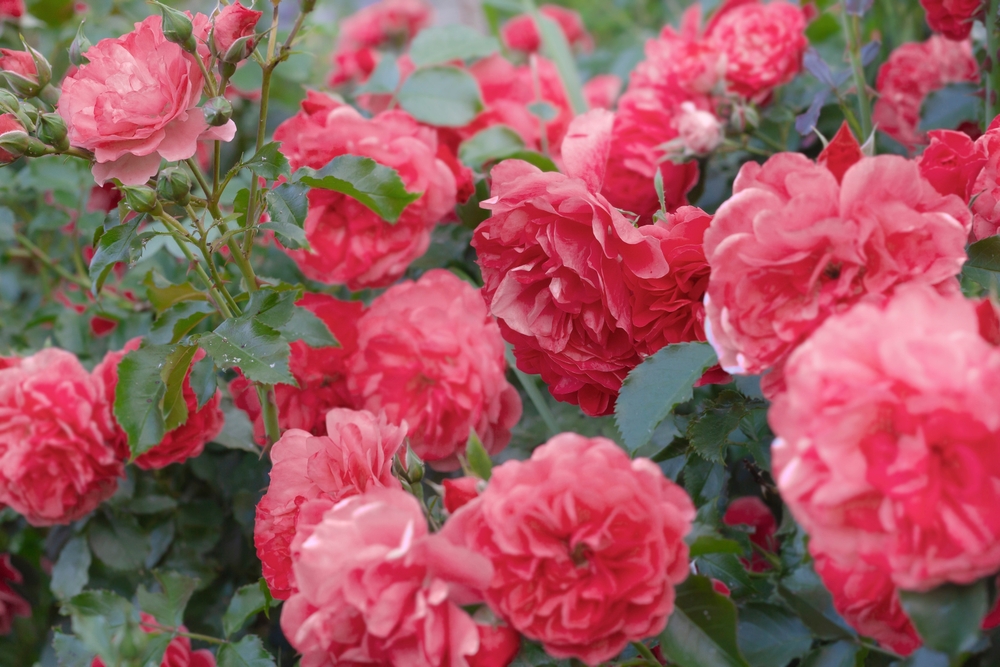 Caring for climbing roses after pruning is critical to ensure they recover well and go on to produce vigorous growth and abundant blooms. Here's how to care for your climbing roses post-pruning:
Caring for climbing roses after pruning is critical to ensure they recover well and go on to produce vigorous growth and abundant blooms. Here's how to care for your climbing roses post-pruning:
1. Watering
Ensure the plants are well-watered, especially in the first few weeks after pruning. Water deeply at the base of the plant to encourage deep root growth. Avoid overhead watering to minimize the risk of leaf diseases.2. Feeding
After pruning, it's an excellent time to feed your climbing roses. Apply a balanced, slow-release fertilizer formulated for roses around the base of the plant. This will provide essential nutrients to support new growth. Organic options like well-rotted manure or compost can also be beneficial, offering a slow release of nutrients and improving soil structure.3. Mulching
Apply a thick layer of organic mulch (such as well-rotted manure, compost, or wood chips) around the base of the rose to help retain soil moisture, suppress weeds, and maintain even soil temperatures. Keep the mulch a few inches away from the stem to prevent rot.4. Tying In New Growth
As new shoots develop, gently tie them in to their supports. Training new growth horizontally will encourage more side shoots, leading to a fuller plant with more flowers. Use soft ties or twine to avoid damaging the stems.5. Monitoring for Pests and Diseases
Keep an eye out for common rose pests and diseases. Early detection and treatment are key to managing issues like aphids, black spot, and powdery mildew. Regularly inspect the leaves, stems, and buds, and apply treatments as necessary to keep your roses healthy.6. Protection Against Harsh Conditions
If you pruned late in the season or if unexpected cold weather is forecasted, consider providing some protection to the newly pruned roses. Covering them with a burlap sack or garden fleece can help shield the vulnerable new growth from frost damage.7. Regular Observation
After pruning and caring for your climbing roses, continue to observe their growth throughout the season. This will help you identify any needs they may have promptly, whether it's additional feeding, pest control, or further light pruning to shape the plant or remove any dead or diseased growth. By following these care steps after pruning, you help ensure that your climbing roses remain healthy, vigorous, and ready to put on a spectacular display of blooms.An Overview of Pruning a Climbing Roses
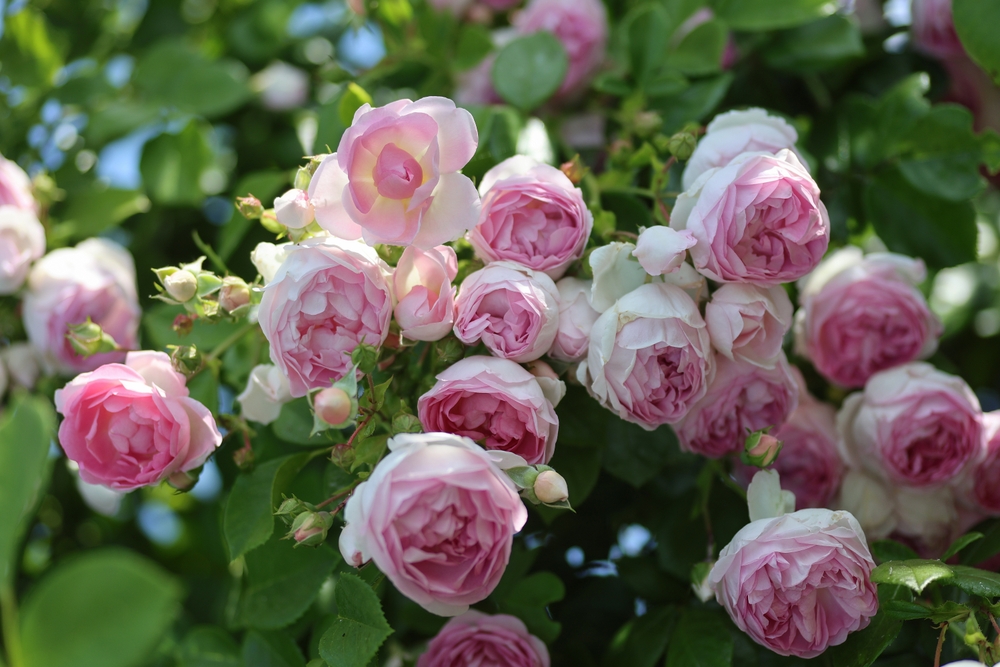 Pruning climbing roses is a vital gardening task that ensures the health, vitality, and beauty of these beloved plants. Proper pruning helps to stimulate growth, enhance flowering, and maintain the desired shape and size of the rose. Based on expert advice from various sources, here is an overview of how to effectively prune climbing roses.
Pruning climbing roses is a vital gardening task that ensures the health, vitality, and beauty of these beloved plants. Proper pruning helps to stimulate growth, enhance flowering, and maintain the desired shape and size of the rose. Based on expert advice from various sources, here is an overview of how to effectively prune climbing roses.
Understanding Climbing Roses
Climbing roses are known for their ability to produce long canes that can be trained along fences, walls, trellises, and other structures. They often bloom at least twice each growing season: initially on older branches, followed by blooms on the current season's growth. This unique blooming habit requires a thoughtful approach to pruning to maximize the plant's flowering potential.Best Time to Prune
The consensus among gardening experts is that the best time to prune climbing roses is in late winter or early spring, just as the plant is coming out of dormancy but before it has begun its active growth phase. This typically falls between January and February, depending on the local climate. Pruning during this time helps to invigorate the plant for the upcoming growing season.Pruning Steps
- 1. Remove Dead or Diseased Wood: Start by removing any canes that are dead, diseased, or dying. This is crucial for maintaining the health of the plant and preventing the spread of disease.
- 2. Tie in New Shoots: Identify new shoots that will fill in gaps or replace older canes on the support structure. Gently tie these canes in place, aiming for a horizontal orientation to encourage more blooms.
- 3. Prune Flowered Side Shoots: For canes that have already flowered, prune the side shoots that bore flowers last season. This encourages the development of new shoots, which will bear flowers in the future.
- 4. General Shape and Maintenance: Work from the bottom of the plant upwards, removing any crossing canes to prevent damage and improve air circulation within the plant. Also, thin out small, twiggy growth to direct the plant's energy towards producing strong, healthy shoots.
Aftercare
Following pruning, it's important to provide the climbing rose with the care it needs to recover and thrive:- - Watering: Ensure the rose is adequately watered, particularly during dry periods.
- - Feeding: Apply a balanced fertilizer to support new growth and flowering.
- - Mulching: A layer of organic mulch around the base can help retain moisture, suppress weeds, and gradually improve soil health.
Conclusion
Pruning climbing roses is a rewarding task that, when done correctly, leads to a healthier plant with more abundant and beautiful blooms. By following these guidelines and paying attention to the needs of your specific rose variety, you can enjoy the stunning visual impact of climbing roses in your garden season after season.It is far better to train the main stems of the climber in a horizontal manner along a fence or trellis. This will then result in many more shoots - growing horizontally - with resulting larger numbers of blooms.
Climbing Roses that are from Hybrid Tea or Floribunda parentage, rarely have the profuse flowering of their bush counterparts.
Climbing Roses differ from Ramblers in a few respects. A climbing rose will have five leaflets that make up the leaf, whereas a rambler normally has seven leaflets per leaf. Together with this, Climbing Roses generally have stems that are more rigid than rambling roses.
Climbing Roses are split into two basic groups, being 'once flowering' and 'repeat flowering'.
The Hybrid Tea types have larger typical classical rose type flowers, whilst the Floribundas have clusters of smaller flowers. Both type of Climbers have their merits. In many instances, the blooms of the HT types are much larger than their 'bush' counterparts. However, there is not often the repeat flowering characteristics of the parents in either of the Climbing forms.
Climbing Roses should not be pruned in the first two or three years, but instead trained to form horizontal laterals where this is possible - for the reasons outlined above.Thereafter, with the 'once a year' flowering types, prune back right after flowering, for they normally flower on growths that were made the previous year. If you prune this type in the winter, you will probably be cutting off the next year's flowering growths!
The Perpetual flowering types can be pruned - if necessary - in the winter months. However, this type will flower for many years from laterals from the same mature canes. each winter, cut back the laterals to within 2 or three buds of the horizontal cane structure. If the flowering becomes weak, then winter pruning a few of the weaker canes out will allow for more vigorous growth.
Best Selling Gardening Products
Popular Gardening Sections

Problems
Identify Weeds in The Garden - How to deal with weeds. Diseases and Pest which harm your garden and plants, learn how to prevent, deter and erradicate your garden problems.
Garden Problems
Pruning
Pruning Guide. Shrubs flower better with correct pruning. Many illustrations and examples of what to do - and when. Includes evergreens, roses, flowering shrubs, spring flowering shrubs and pruning for stem effect. This is our most viewed and comprehensive section,
Pruning
Gardening Businesses
Gardening Businesses listed in the UK counties and USA states. County and State Listings of businesses involved in Garden supplies and services. If you wish to be added to the Directory, please send us your information. Having problems, use the search box
Businesses
Gardening
In this section you will learn about Gardening Basics, Containers, Landscaping, Propagation and Soil.
Gardening
Gardening Gifts
Gardening Gifts and Reviews, Read Before you Buy
- Gardening Gifts Ideas
- Gifts For Her
- Gifts For Men
- Power Tool Gifts
- Cheap Gifts
- Personalised Gifts
- Wildlife Gifts
- Family Gifts



